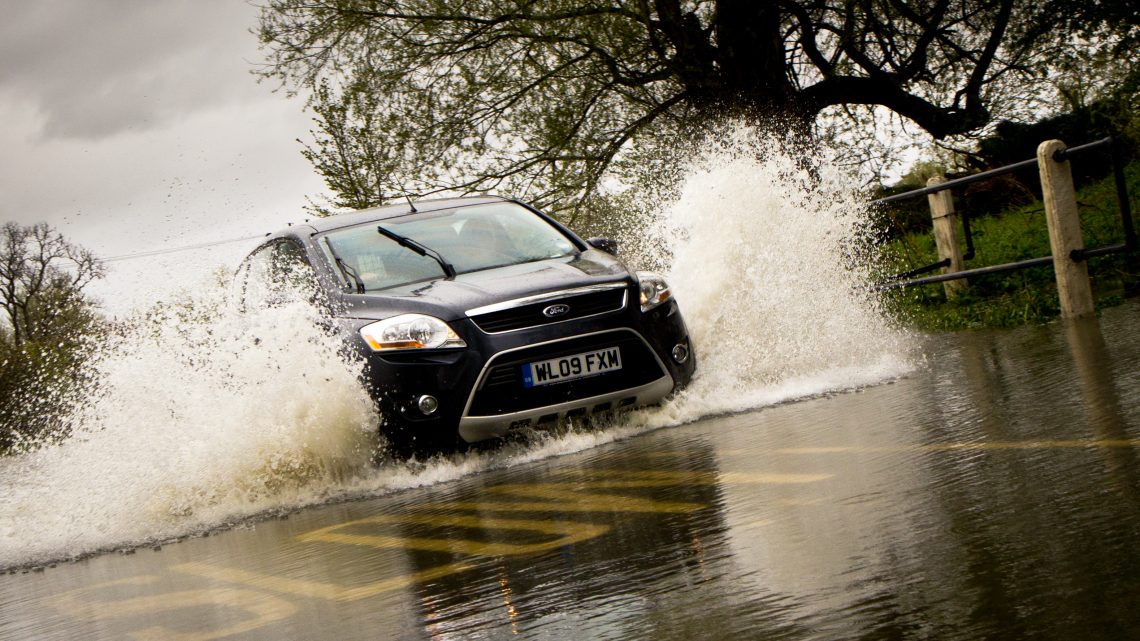Photo provided by Flickr: Matt Preston
In the worst natural disaster for Louisiana since Superstorm Sandy, August’s severe flooding left 13 people dead, destroyed 69,000 homes and ended with 30,000 rescues.
Most cars can be swept away in just two feet of water. In deep water, like in Louisiana, cars sink; a dramatic rescue of a woman and her dog trapped in a sinking convertible show just how fast it can all happen.
Most parents understand the risk of driving through water, but do your young invincible drivers?
While Louisiana is an extreme example, flooding happens in almost every state. Ohio, Colorado, Missouri, Florida and Texas experienced floods in 2016. Southern California flooded when cities like San Diego weren’t prepared for El Nino. Even notoriously dry states like Arizona and Nevada incur annual damage from flash floods.
In short, flooding is a nationwide weather hazard. Below are safety tips; make sure new (and old) drivers let these sink in before the wet seasons are here again.
Driving Safely in Rain or Flash Floods
- “Turn around, don’t drown.” That’s the National Weather Service’s motto for drivers approaching a flooded street- find another way home. Countless cars and trucks get stuck in water when their tires lose traction, engines flood, etc.
- Stop tailgating. Let’s face it, very few drivers follow the three-second distance rule, experienced or not. However, cars need more time for brakes to work properly when driving on slick roads. Having to slam on brakes in the rain, as is common practice when tailgating, is likely to send a driver hydroplaning. Depending on speed and size of the car, it can take less than an inch of water to start hydroplaning.
- Don’t Pull Over. Yes, heavy rain reduces visibility but pulling over on a busy road or freeway is equally, if not more, dangerous. motorcycle accident attorneys at Fiol Law Group, says this is one of the biggest mistakes (sometimes creating disastrous chain reactions) people come into their office for after heavy rains. The safest option is to continue driving at the same speed, pulling over only after safely exiting a highway and into a parking lot.
- Wipers on, headlights on, hazards off. Depending on where you live, this is the law for driving in harsh conditions including heavy rain and flash floods. While the first two should be no-brainers, many drivers like to put hazard lights on when forced to drive below the speed limits due to weather conditions. However, using hazards when not in an actual emergency or stopped on an active road can confuse other drivers and create too many rooms for error, ending with crashes. If you need to slow down, move to the far right lane when safe. Click here to see specific state laws.
- Look for downed power lines. Electrical currents can easily pass through water from fallen electric or power lines. Avoid driving through this water.
- Eyes off the Phone. Don’t Snapchat the floods simulating a drive-thru car wash; it’s not worth it. Distracted driving is becoming a leading cause of car accidents, rain or shine, and should be a recurring safety discussion with new drivers.
Avoid Getting Trapped in the Vehicle
- Don’t blindly follow other cars. Do your best to estimate the depth of the water if you must cross it. Carefully watch other cars travel through, taking note of how far under their car goes. If they get stuck, call for help.
- Understand your car’s limitations. Six inches of water can stall a car; one foot of water can float most cars; two feet of rushing water can carry away cars, SUVs and pickup trucks.
- Get out of the car. If caught on a flooded road with rising water- flash floods come with almost no warning- immediately get out of the car and move to higher ground.
What to Do if Swept Away by Flood Water
As most safety articles will tell readers, don’t panic. Of course, everyone panics as no amount of reading is true practice for this moment. Remember, it can take as little as six inches of water to knock people off their feet, so pay attention to rising water and the flood’s direction. However, if swept away after exiting your car do your best to point your feet downstream and direct your body over, not under, obstacles.
If the car is swept away while you’re still inside, release your seat belt first and roll down your window to get out of the car. If the windows won’t roll down, wait for your car to fill with water. While scary, this will allow your door to open so you can swim to the surface. Do not wait for the car to sink to try and open the doors; push them open right away.
If you live in a high flood risk area, you can download the free Red Cross Emergency App. It sends alerts and information about hurricanes, flooding and emergency shelter locations. And don’t forget about the non-driving age family members; just because the steering wheel is out of reach doesn’t mean they can’t be passengers when a flash flood makes its grand entrance. The free Red Cross’ Monster App teaches children what to do in floods or hurricanes through fun and interactive games.





No Comment